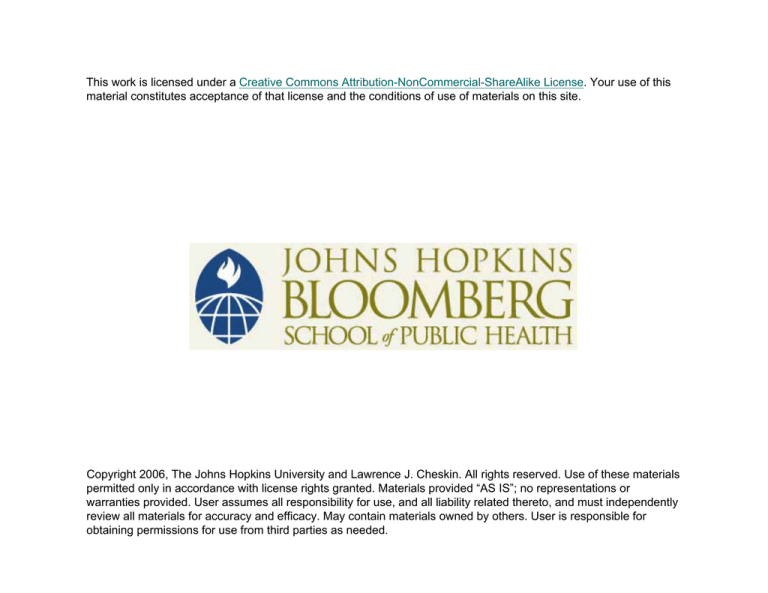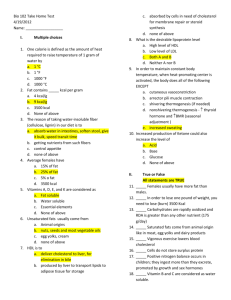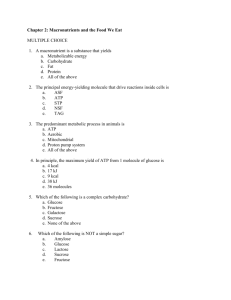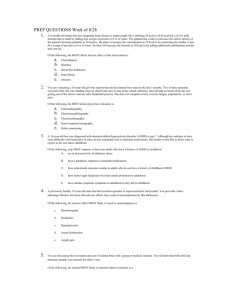
This work is licensed under a Creative Commons Attribution-NonCommercial-ShareAlike License. Your use of this
material constitutes acceptance of that license and the conditions of use of materials on this site.
Copyright 2006, The Johns Hopkins University and Lawrence J. Cheskin. All rights reserved. Use of these materials
permitted only in accordance with license rights granted. Materials provided “AS IS”; no representations or
warranties provided. User assumes all responsibility for use, and all liability related thereto, and must independently
review all materials for accuracy and efficacy. May contain materials owned by others. User is responsible for
obtaining permissions for use from third parties as needed.
Lecture 3: Digestion and
Dieting Physiology
Critical Analysis of Popular Diets
and Supplements
Instructor: Lawrence J. Cheskin, M.D.
Associate Professor, International Health
Director, Johns Hopkins Weight Management Center
Obesity Trends* Among U.S. Adults
BRFSS, 1991-2002
(*BMI ≥30, or ~ 30 lbs overweight for 5’ 4” woman)
1991
1995
2002
No Data
Source: CDC, 2003
<10%
10%–14%
15%–19%
20%–24%
≥25%
Digestion
The food path in animals:
z
z
z
z
z
z
z
Hungry animal efficiently searches out food
Food is compared to past taste, smell
If ok, eaten, swallowed, stimulates stretch,
chemoreceptors, which signal CNS, regulate meal
Bolus passes to small bowel, inhibits gastric
emptying rate; food is digested by enzymes in SB
Glucose is now absorbed: ghrelin, CCK, other
hormones released that end meal.
Insulin released: transports glucose into tissues;
glucagon opposes
Rest of nutrients are stored; control long-term
intake
Digestion
{
The food path in humans:
Same physiology, different outcome…
Why?
z
z
z
Hungry human is now vastly more efficient
than animals at searching out food
Food supply is very high in energy density
Humans can downplay/ignore physiologic
signals: “What’s hunger got to do with it?”
Dieting Basics
1.
2.
3.
4.
5.
6.
7.
8.
Evaluate energy needs (separate lecture)
Set degree of energy deficit/ rate of weight
loss desired
Calculate energy intake needed
Decide on macronutrient composition
Decide on meal/snack frequency
Decide on variety
Design weekly menus
Moniter and adjust as needed during
weight loss
1. Evaluate Energy Needs
{
Your choices:
1.
Prediction equations based on weight,
gender, age; simplest is 16 kcal/lb
2.
Indirect calorimetry
Adjust both for activity level
z
2. Set Degree of Energy Deficit/
Rate of Weight Loss Desired
{
Your choices:
z
z
z
z
Low calorie diet> 800 kcal/day
Very low calorie diet- < 800 kcal/d
Weight maintenance diet- based on
current EE
Rate of weight loss depends on EE:
7(EE-EI on diet)/3500 = predicted weekly
loss, lbs
{ Each 500 kcal/d deficit = 1 lb/wk loss
{ 3500 x lbs per week loss desired/ 7 d =
daily diet deficit needed
{
3. Calculate Energy Intake Needed
{
{
EE – daily diet deficit in kcal = daily
kcal allowed on diet
Example: I weigh 160 lbs, wish to
lose
1 lb/wk:
z
z
z
EE = 160 x 16 = 2360 kcal/d
Deficit needed = 3500/7 = 500 kcal/d
2360 – 500 = 1860 kcal/d is the
prescribed diet
4. Decide on Macronutrient Composition
{
Your choices:
z
z
z
z
z
Balanced deficit
Fat restricted
Carbohydrate restricted (ketogenic?)
High or normal protein
Others
5. Decide on Meal/Snack Frequency
{
{
{
{
{
Generally, large, infrequent meals cause
greater weight gain than small, frequent
snacks
If total daily EI is held constant, this effect
disappears
Thus, total daily EI is not being held
constant when meal frequency changes
Small, frequent meals generally satisfy
dieters better
Epidemiologic data: small, freq meals Æ low
BMI
6. Decide on Variety
{
{
{
Sensory variety promotes
overconsumption
Limited menu limits consumption
This is how is may be possible to
lose weight on certain monotonous
fad diets (cabbage soup, HagenDags)
7. Design Weekly Menus
{
{
{
{
Dietitians are best at this
Books
Pamphlets from ADA, etc
Take into account dieters food
preferences
8. Moniter and Adjust as Needed
During Weight Loss
{
{
{
Weekly weights at a minimum
Daily weights at a maximum
Recognize the phases of weight loss
z
z
z
z
z
Initial diuresis
Predictable weight loss
Slowing of weight loss (deficit narrows)
Honeymoon ends- diet must be
changed
Maintenance
Dieting Techniques and Tools: Fat
Mimetics
{
{
{
{
Olestra: fatty acid side chains linked to
a sucrose (cf glycerol) molecule, and 7-9
instead of 3 fatty acid side chains
Olestra is indigestible by lipases and by
bacterial fermentation
Potentially useful tool to separate the
sensory from the energy effects of foods
Just as palatable as regular fat to most
people
Dieting Techniques and Tools:
Degree of Compensation
{
{
The utility of a fat mimetic hinges on the degree
of compensation for fat and calories it elicits
Compensation formula:
%C = 1- [(EI unsubstituted – EI
substituted) /
(m kcal - u kcal)] x 100
Where:
m = calories of substituted food consumed
u = calories consumed at baseline of unsubstituted food
EI = total energy intake in kcal consumed ad libitum during
each measurement period (includes the calories of the
substituted or unsubstituted food).
Studies of Degree of Compensation-I
{
Olestra:
z
z
Substituting 55g of dietary fat with olestra
(potential energy savings=500 kcal) is only about
1/3 compensated the next day, especially when
substitution is covert (Miller et al, 1998)
Olestra is minimally compensated in terms of fat
grams consumed in studies of up to 14 days (Hill
1998)
Studies of Degree of Compensation-II
{
Aspartame (Nutrisweet):
z
{
Energy compensation is nearly complete in the
majority of studies
Differences in %C by age, gender, BMI:
z
z
Young males exhibit more complete
compensation than females and older adults
(Rolls 1998)
Obese individuals generally have been found to
compensate more poorly than lean (Rolls
1994, Roe 1999)






